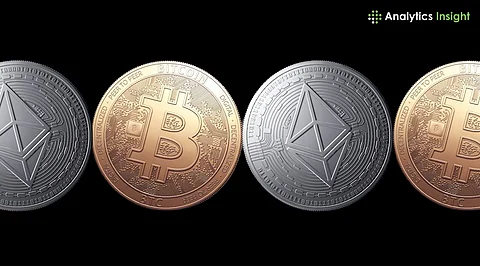

India’s BJP leader proposes a Bitcoin reserve pilot amid rising global crypto adoption.
Hong Kong sets August 1 launch for stablecoin licensing and tokenized bond regulations.
UAE’s Aqua1 fund invests $100M in Trump-linked WLFI tokens to boost blockchain finance.
Global crypto news has picked up lately, with interest building in India to start a pilot offering a Bitcoin reserve, a framework created by Hong Kong for stablecoins and tokenized assets. Additionally, a UAE-based investment fund became the major investor in World Liberty Financial, which is associated with Trump. These developments signal a shift in the global attitude toward regulated adoption and the financial benefits of digital assets.
India’s ruling party spokesperson Pradeep Bhandari has urged the government to launch a Bitcoin reserve pilot. He suggested the idea in one of his recent articles, referencing the growing use of sovereign cryptocurrencies in countries such as the United States and Bhutan. According to Bhandari, a move like this would make India well-placed as global finance shifts toward digital assets.
Bhandari cited the United States' plans to accumulate Bitcoins in reserves and state-initiated mining in Bhutan. He pointed out that, due to its growing renewable energy infrastructure, India could become a leader in sustainable cryptocurrency programs. Bhandari describes a national reserve as a “calculated step,” which would enhance the resilience of the Indian economy and boost innovation.
Currently, India levies high taxes on digital assets, although no existing regulatory framework is in place. Crypto depreciation is taxed at 30%, and a 1% Tax Deducted at Source (TDS) is charged on transactions exceeding $115. However, the lack of regulation leaves investors without protection. Bhandari suggested that the availability of a backup pilot and regulatory certainty might close such a gap, thereby attracting innovation.
Hong Kong has announced a new regulatory framework for digital assets, focusing on stablecoins and the tokenization of real-world assets. The plan, known as the “LEAP” framework, was introduced by financial authorities to build a regulated and globally competitive crypto ecosystem. It prioritizes legal clarity, ecosystem expansion, application development, and talent acquisition.
As of August 1, all issuers of stablecoins will have to obtain licenses to operate in Hong Kong. Regulation by the Securities and Futures Commission will license the secure custody and dealing of digital assets. Still, other authorities will examine the law, which will facilitate the tokenisation of assets.
The government also aims to standardize the issuance of tokenized government bonds and promote the use of tokenized exchange-traded funds (ETFs). Officials said secondary trading of these ETFs could soon begin on licensed digital asset platforms. Plans also include expanding tokenization to sectors such as precious metals and renewable energy.
Financial Secretary Paul Chan emphasized the importance of integrating the real economy with blockchain technology. A new Cyberport program will support blockchain startups, another sign that Hong Kong is focused on digital innovation.
UAE-based Aqua1 Foundation has acquired $100 million worth of World Liberty Financial (WLFI) tokens. The announcement comes shortly after World Liberty confirmed plans to enable trading for its WLFI governance tokens. The token grants holders voting rights, but transfers remain restricted.
The DeFi project, which openly connects itself to former U.S. President Donald Trump, has attracted scrutiny for its political affiliations. Trump holds over 15.75 billion WLFI tokens and has reportedly earned more than $57 million from token sales. His sons are also involved in the project’s operations.
Aqua1’s investment aims to accelerate the development of a blockchain-powered financial ecosystem. According to its statement, the partnership reflects a shared goal of expanding access to digital assets and enhancing global financial infrastructure.
The agreement follows a $2 billion deal between MGX of Abu Dhabi and Binance, whereby World Liberty's USD1 was used. The trends indicate an increasing connection between the Middle East and cryptocurrency projects.
Also Read: Ethereum Targets $2,500: Will Bullish Momentum Break the Barrier?
